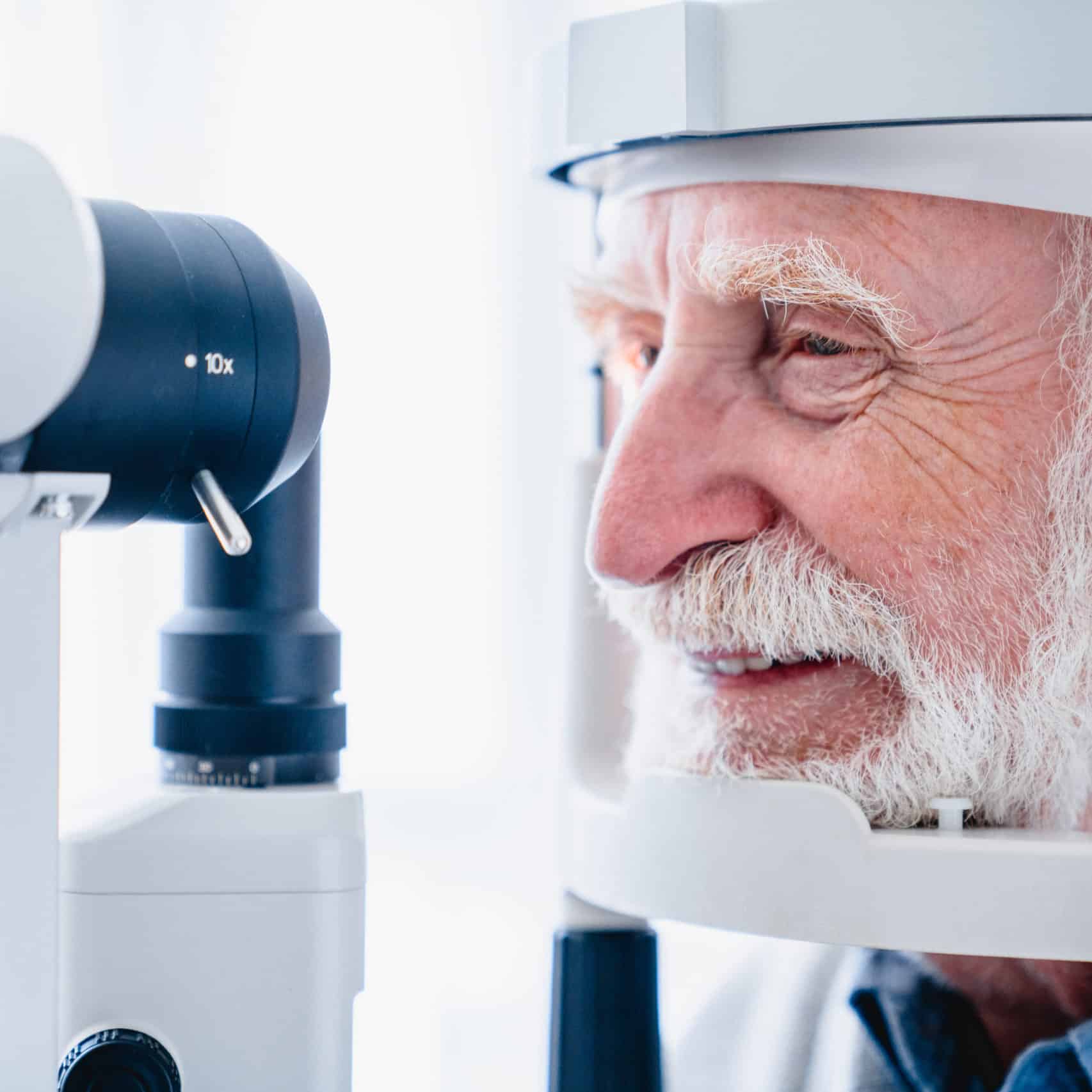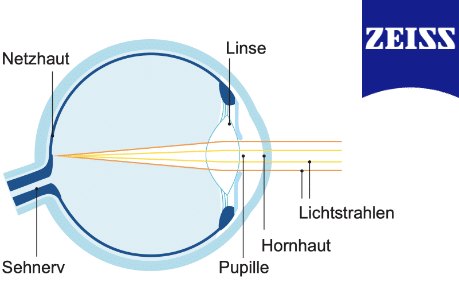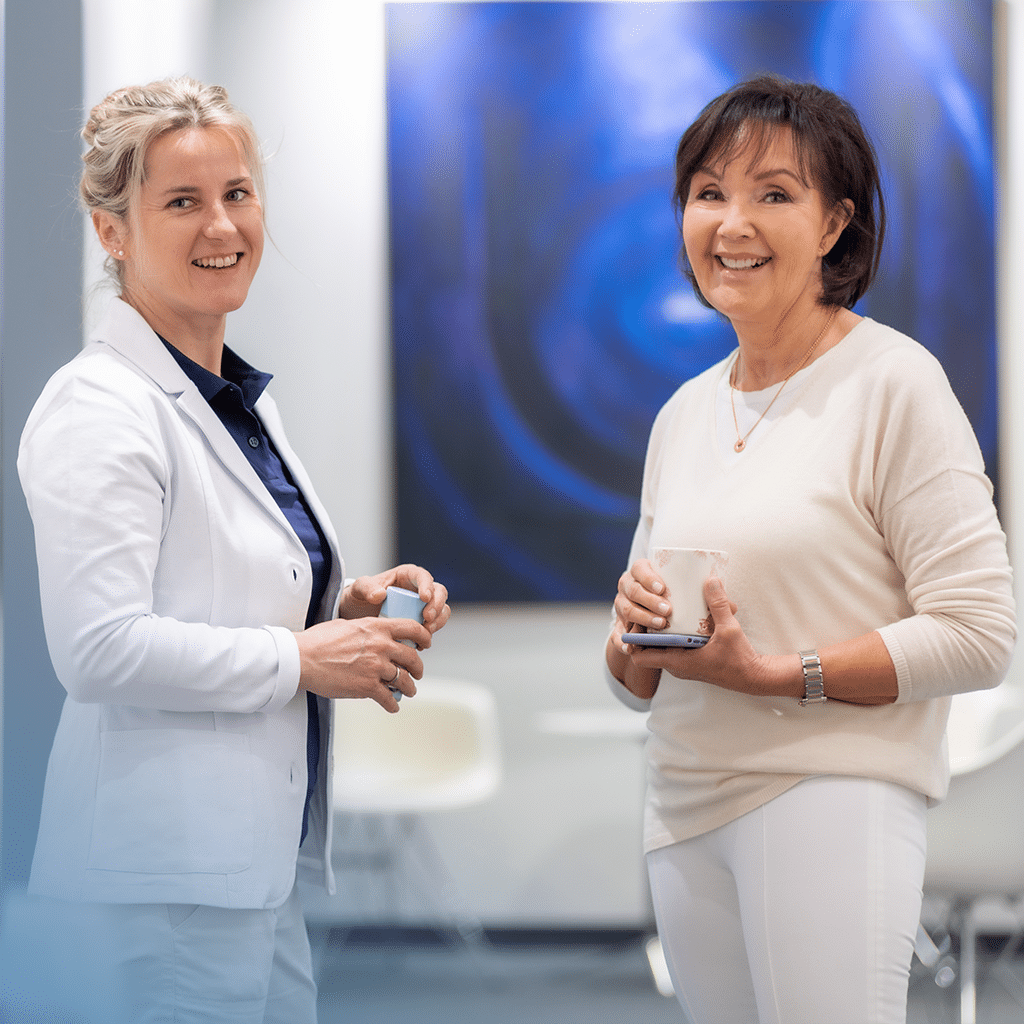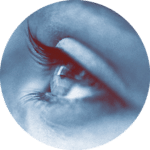Cataract surgery from 2,000€/eye
Sharp vision, new life: Your solution for cataracts
Clear vision without glasses or contact lenses – treatments for cataracts in Wiesbaden, Mainz and Frankfurt.
Free initial consultation
Fast appointment scheduling
Mass processing? Not here
Your advantages of our private clinic - our 5-star quality for cataracts
Security ★★★★★
Our exemplary, certified hygiene measures and state-of-the-art technologies offer you a safe environment especially for your cataract treatment. With an impressive track record in cataract surgery We guarantee the highest safety standards and put your well-being first.
Individual advice ★★★★★
We offer comprehensive, tailored to you and your specific needs in the treatment of cataracts tailored advice from our chief physician. Our warm and knowledgeable team creates a fear-free atmosphere and guides the cataract surgery carefully with a local anesthetic.
Quality ★★★★★
Our certifications and advanced technology guarantee outstanding quality and customer satisfaction in all aspects of cataract treatment – we focus on quality rather than quantity in every cataract operation.
competence ★★★★★
As experts for cataracts Our entire team, from the dedicated specialist staff to the renowned chief physician, attaches great importance to the highest level of specialist expertise and offers you a first-class all-round service from diagnosis to detailed aftercare.
Cataracts – surgery and premium lenses
At LZW, we are leading experts and offer you the most effective treatment for cataracts. Through precise surgical procedures that are performed on an outpatient basis and with low risk, we effectively prevent progressive loss of vision.
- Short, gentle operation duration of approx. 15 minutes.
- Outpatient procedure with the option for short anesthesia
- After a few days, very good vision again
What is cataract?
Cataracts, medically known as cataracts, are an age-related clouding of the lens of the eye, often accompanied by a gradual decrease in visual acuity and increased sensitivity to light. This clouding results from the accumulation of debris in the lens, causing a visible gray discoloration behind the pupil. Cataracts are often caused by natural aging processes, but can also be influenced by genetic factors, UV radiation or diabetes.
The symptoms at a glance
The typical symptoms of cataracts include a gradual deterioration of visual acuity, loss of contrast, increased sensitivity to glare and difficulty seeing in twilight. Patients often also report altered color perception. These symptoms usually develop gradually.
cause of cataracts
Cataracts usually develop as part of the natural aging process. In addition, factors such as long-term UV exposure, certain medications (e.g. cortisone therapy), diabetes or eye injuries can contribute to the development of cataracts. Very rarely, there are also congenital variants.
Alternatives to surgery
In the early stages of cataracts, visual aids such as stronger glasses or contact lenses can help improve the quality of vision. However, these measures cannot stop or reverse the clouding of the lens, so surgery often remains the most effective solution.
Together with our partners for best quality & your safety

What kind of vision do you want?
Choosing the right intraocular lens (IOL) for cataract surgery can significantly improve your vision. Modern IOLs offer advanced solutions that allow you to enjoy everyday activities without constant dependence on glasses.
Innovative technologies that enable precise vision correction allow you to fully enjoy your leisure activities such as reading, traveling and sports. These lenses are designed to follow the natural movements of the eye and offer a customized solution for your vision needs.
Exclusive treatment and personal care by Dr. Beate Steinhorst
For more than 20 years, Dr. Beate Steinhorst has been working with the utmost personal commitment and expertise to enable people to live a life without glasses. Through advanced eye surgery and unique 5-star care, she helps her patients experience the world in full clarity. With her many years of experience and outstanding expertise, Dr. Steinhorst ensures that each of her patients achieves the best possible quality of vision.
You are currently viewing a placeholder content of YouTube. To access the actual content, click on the button below. Please note that this involves sharing data with third parties.
More informationPremium lenses are standard for us - lens types & methods
In contrast to the past, when artificial lenses were only used for cataracts, lens operations have become much more important today. In particular, due to the availability of multifocal lenses, which are better than progressive lenses and enable clear vision in the distance and in various close-up areas, including overhead, with a completely natural head position and without "zone reduction". We have specialized in this at the LZW and only use premium lenses (e.g. Zeiss).
However, individual advice from an ophthalmologist is essential for selecting the right lens.
- Multifocal lenses
- Monofocal lenses
- EDOF lenses
- Aspherical lenses
- Toric lenses
Multifocal intraocular lenses (MIOLs) represent a common solution to open up a visible world to those affected without the need for visual aids. Such lenses enable wearers to clearly see objects at all distances - whether close, in between or far away - without the support of glasses. MIOLs are particularly advantageous for individuals who value independence from glasses in their daily lives. Due to their special nature, halo effects around light sources can occur after implantation, especially in poorly lit environments. However, users usually quickly get used to this side effect.
TRIFOCAL intraocular lenses for good vision without glasses _ pdf
Monofocal lenses have a defined quality of vision at a specific distance, usually optimized for distance vision.
Advantages: Provide the best contrast and a clear, stable vision (usually) for distance. Easy and reliable to use.
Application: Ideal for patients who prefer clear vision at a specific distance without the complexity of multifocal lenses. Typically requires glasses for near or other viewing distances.
EDOF lenses are a modern solution in the field of ophthalmology that offer a continuous focal length over different distances. They differ from traditional multifocal lenses in their design, which allows for significant visual acuity over a wider range of distances. Ideal for patients seeking improved vision quality over different distances, especially for those with high demands on night vision, such as drivers.
Advantages:
- Provide clear vision for normal print size up to close, making them practical for everyday visual tasks such as reading.
- Improved night vision compared to traditional multifocal lenses, making them beneficial for people who drive at night or frequently work in low light conditions.
EDOF intraocular lenses for excellent vision for an active lifestyle _ pdf
Aspheric lenses represent an advancement in monofocal IOL technology by utilizing a special geometry that flattens from the inside out. This advanced design sets them apart from standard lenses.
ASPHERICAL monofocal lenses for good vision in all lighting conditions _ pdf
Toric lenses, which are used in all types of lenses, correct visual acuity caused by a non-spherical cornea (astigmatism).
TORIC intraocular lenses for precise astigmatism correction _ pdf
Cataract surgery – step by step at LZW
Preparation on the day of cataract surgery
Preparation for cataract surgery plays a crucial role in its success and patient safety. Here are some key points to consider:
- No cosmetics: Avoid creams, makeup, aftershave and perfume to reduce the risk of infection.
- Comfortable clothing: Choose clothing for maximum comfort before and after the procedure.
- Light meal: Eat a light meal a few hours before the procedure and drink enough clear liquids to ensure a stable circulation. If you are using a short-term anesthetic, please remain fasting.
- Planned return journey: Organize a safe ride home, as you will not be able to drive yourself after the procedure.
Following these guidelines will go a long way in ensuring patient safety and comfort before, during and after cataract surgery.
procedure of cataract surgery
The surgeon makes a minimal incision (approx. 2 mm) and a paracentesis to gain access to the eye and thus operate "in a closed system". A viscoelastic substance is injected to protect the internal structures of the eye and create space for the surgical instruments. The cloudy lens is then removed using phacoemulsification, a technique that uses ultrasound waves. The final placement of the intraocular lens is carried out precisely in the capsular bag of the eye. The small incision closes itself thanks to the special tunnel technique, so that no stitches need to be removed later. A transparent eye patch is placed for postoperative protection.
Behavior after surgery
Typically, patients recover quickly after surgery, although recovery time may vary from individual to individual. Immediately after the procedure, slight blurriness caused by eye ointment and initial corneal swelling is normal; however, this improves quickly. It is important to remain calm, avoid rubbing the eye, and use pain medication if needed. To ensure a successful recovery, it is essential to follow the doctor's instructions carefully.
During the first few days after surgery, it is advisable to avoid physical exertion and protect the eye from unnecessary pressure. Regular follow-up examinations are necessary to monitor the healing process.
effectiveness of the operation
Cataract surgery is one of the most effective treatments for cataracts. Most patients experience a significant improvement in the quality of their vision, which means a significant increase in their quality of life.
The intraocular lenses used are long-lasting and usually do not need to be replaced. However, it is important to discuss possible risks and side effects with your ophthalmologist in order to make an informed decision about the procedure.

quality standards with premium lenses from ZEISS
Get detailed advice from our chief physician and find the right premium lenses for your eyes.
Real experiences and results of cataract surgery
Based on authentic experiences and outstanding results, we are proud to be the best-rated laser eye clinic in Wiesbaden. Our 4,8 Sterne bei Google Reviews speak for themselves. Together we will accompany you, step by step, on the way to a life without glasses.




FAQ: Frequently Asked Questions
Is cataract surgery painful?
Cataract surgery is usually painless because we use anesthetic drops during the procedure. Most patients experience only minimal pressure and discomfort.
How much does cataract surgery cost?
The cost of cataract surgery varies and depends on several factors, including the type of IOL lens and the technology chosen.
How long does the IOL lens last?
The durability of the IOL lens depends on the type of lens, but they are usually long-lasting and last a lifetime.
During the first few days after surgery, it is advisable to avoid physical exertion and protect the eye from unnecessary pressure. Regular follow-up examinations are necessary to monitor the healing process.
When will my eye be completely healed?
Recovery time after cataract surgery can vary, but most patients experience a significant improvement in their vision within a few weeks. Our chief physician will give you detailed recovery instructions.
What are the advantages of premium lenses?
Premium lenses offer several benefits, including the ability to see near or far without glasses. These lenses often allow for a more natural vision. However, it is important to note that premium lenses may incur additional costs.
How long will I be out of work?
The amount of time off work after cataract surgery can vary and depends on your job and recovery. In most cases, patients can return to work after 10-14 days.
Is follow-up treatment possible?
Yes, in some cases follow-up treatment may be necessary to further improve vision quality.
When can I drive and exercise again after cataract surgery?
The time when you can drive and play sports again after cataract surgery depends on your individual recovery. As a rule, your eyes should be rested and not strained for at least a week.

